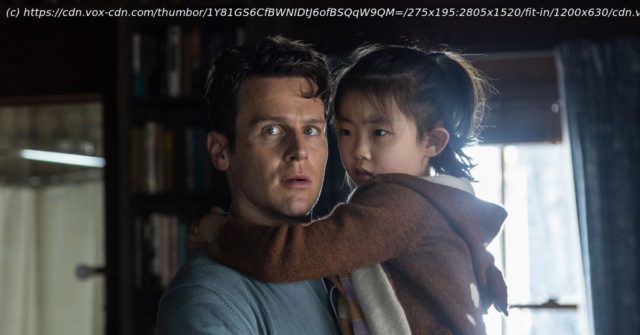M. Night Shyamalan’s horror movie, now streaming on Peacock, is a perfect double feature with Drew Goddard and Joss Whedon’s apocalyptic horror-comedy. Here’s how Knock at the Cabin’s ending changes both stories.
M. Night Shyamalan’s Knock at the Cabin (now streaming on Peacock) and Drew Goddard’s The Cabin in the Woods are radically different movies, but they’re also variations on the same idea. Yes, both are mystery-driven thrillers that hide big reveals behind familiar horror genres. (Knock at the Cabin initially looks like a home-invasion thriller; Cabin in the Woods is pretending to be a slasher movie.) But the similarities run deeper. In both movies, protagonists are told they have to die to prevent the apocalypse. In both cases, the people delivering the message are questionably trustworthy. Both movies suggest the same questions: What would you do if you were told you had to sacrifice yourself to save people you don’t know? Is it worth dying in the hope you might save the world, even if you’ll never know whether that’s true?
But Cabin in the Woods has a lot more fun with the question than Knock at the Cabin. The movies reach very different conclusions about the value of sacrifice, and about the trustworthiness of anyone who demands it. They make a perfect double feature. But ultimately, Knock at the Cabin’s biggest value may be that it makes Cabin in the Woods — already a clever, twist-filled, simultaneously scary and hilarious experience for horror fans — even better than it was on its own.
[Ed. note: End spoilers ahead for both Knock at the Cabin and The Cabin in the Woods.]
Cabin in the Woods stands nicely on its own as a meta-commentary on horror movies, a goof on the genre that gets in some solid, creepy scares, while explaining some of horror cinema’s biggest nonsense. Goddard’s film finds reasons for why horny teens in slasher movies are willing to run off into the woods for sex, no matter how many rumors they hear about sex-hating machete-murderers roaming around. And, in a blink-and-you’ll-miss-it visual gag, there’s an explanation for why horror movie characters often don’t hang onto weapons for long.
The gist of Cabin in the Woods is that once a year, the evil gods slumbering in the heart of the world (a very Lovecraftian concept) demand a sacrifice, in the form of five archetypal beautiful young people. A series of secret organizations around the world engineers that annual sacrifice by selecting victims, luring them into isolation, and forcing them into a horror movie scenario. At every step, the sacrifices are monitored and manipulated to ensure their deaths.
In Cabin in the Woods, some of the protagonists manage to see behind the curtain and realize they’ve been lied to, and are essentially being executed in ways designed to maximize their terror and suffering. When two of the survivors, Dana (Kristen Connolly) and Marty (Fran Kranz) confront the mysterious director (Sigourney Weaver) behind the American iteration of the ritual, she explains that all the deception and trickery is necessary to keep the monstrosities at bay. (There’s a good strong hint there that the “monstrosities” are a metaphor for horror fans, who eagerly seek out every opportunity to watch people die graphically on screen.






